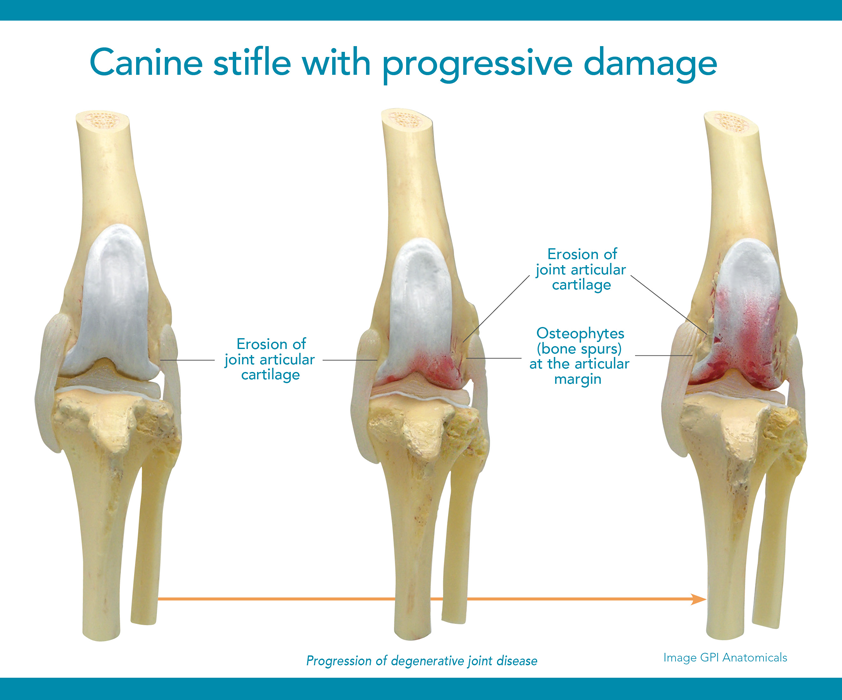
Abstract
Extracorporeal shockwave therapy (ESWT) has expanded from the original uses of human urinary calculi treatment to veterinary orthopaedic applications. This paper investigates the feasibility and efficacy of treating dogs with osteoarthritis of the stifle joint with ESWT.
In this study, dogs with persistent stifle lameness despite previous surgical or medical treatment were either treated with ESWT or served as untreated controls. The more lame rear limb of each dog was determined by force platform analysis. The range of motion (ROM) of the stifle joints was assessed by goniometry. Force platform gait analysis and goniometry were performed on both groups for four visits at three-week intervals and a final examination four weeks later.
Shock wave therapy was performed three times on the treated dogs, once at each of the first three examinations. A placebo treatment consisting of clipping and wetting the hair was performed on the control dogs. The vertical forces were evaluated for objective analysis of treatment response.
For peak vertical force (PVF), four of seven treated dogs improved, while only one of five of control dogs improved. The PVF for the within group analysis did not show any significant change for the treated group, however, the control group has a significant decrease (p = 0.05) in PVF consistent with an increase in lameness.
The range of motion (ROM) of the stifle joint improved in five of seven treated dogs and three of five controls. Dogs in the treated group had a trend toward increased ROM (p = 0.07) and a ‘positive slope’ when compared to dogs in the control group which did not have a significant change (p = 0.78) and had a negative slope indicating the dogs were developing a decrease in ROM.
https://pubmed.ncbi.nlm.nih.gov/16594445/
A study by: J Dahlberg 1, G Fitch, R B Evans, S R McClure, M Conzemius
